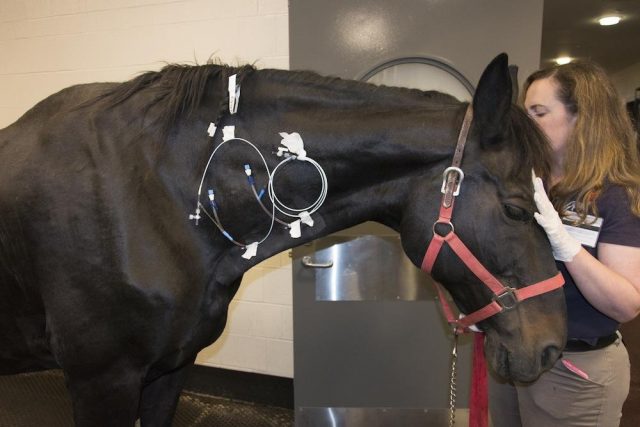
Electrode Treatment For Atrial Fibrillation Reverses Irregular Heartbeat
Cardiologists at Cornell University successfully reverted an irregular heartbeat in a 19-year-old mare through the process of transvenous electrical cardioversion. Get the scoop and watch video from the procedure!
Atrial fibrillation (AF), common particularly in racehorses but occurring in any horse, causes a rapid, erratic heartbeat. While horses can survive with AF for years, the condition does often cause poor performance, inhibiting a horse’s working life. The most common cause of irregular heartbeat, AF takes place when the electrical signals that control heart rate and contraction become disorganized.
The traditional treatment for AF is the drug quinidine: it’s about 85% successful in reversing irregular heartbeat, but also includes a few potential side effects. Quinidine is not as effective for horses who have had AF for several years. A new treatment recently documented at Cornell University College of Veterinary Medicine may be a better option for reversing AF for some horses.
Transvenous electrical cardioversion, or TVEC, is essentially like a debifrillator for horses — but because of the horse’s anatomy, with large lungs and muscle mass over the chest, the electrodes are applied not externally but by catheter onto the right atrium of the heart. The catheters are three feet long and are placed via the right jugular vein.
The placement of the catheters, according to Cornell cardiologist Romain Pariaut, is the most difficult part of the procedure: “In horses, it’s a long path to the heart from the outside.” The catheters are monitored by cardiac ultrasound, and placement of the electrodes is verified with an X-ray. The horse is then anesthetized and a timed electric shock is applied to return the heart to a normal rhythm.
Cornell University equine cardiologists recently performed this procedure on a 19-year-old mare named On-Star, part of the Cornell Equine Park teaching herd. Veterinary students picked up her arrhythmia during an examination and the mare was diagnosed with AF. On-Star’s procedure took about four hours, with the veterinarian team headed by Dr. Bruce Kornreich and Pariaut working hard to reduce the amount of time the mare was under anesthesia — one of the biggest risks with the TVEC procedure.
TVEC was previously offered by Cornell University Equine Hospital until roughly five years ago, when the catheters were no longer available — but with the equipment returning to the market, the procedure is once again a viable option.
So far, On-Star is recovering well from her TVEC procedure with no complications. Spontaneous return to AF is always possible with both quinidine and TVEC, but the cardiology team at Cornell University College of Veterinary Medicine is pleased to be able to offer this procedure as another option to help horses return to a normal heart rhythm and a performance career.








Leave a Comment